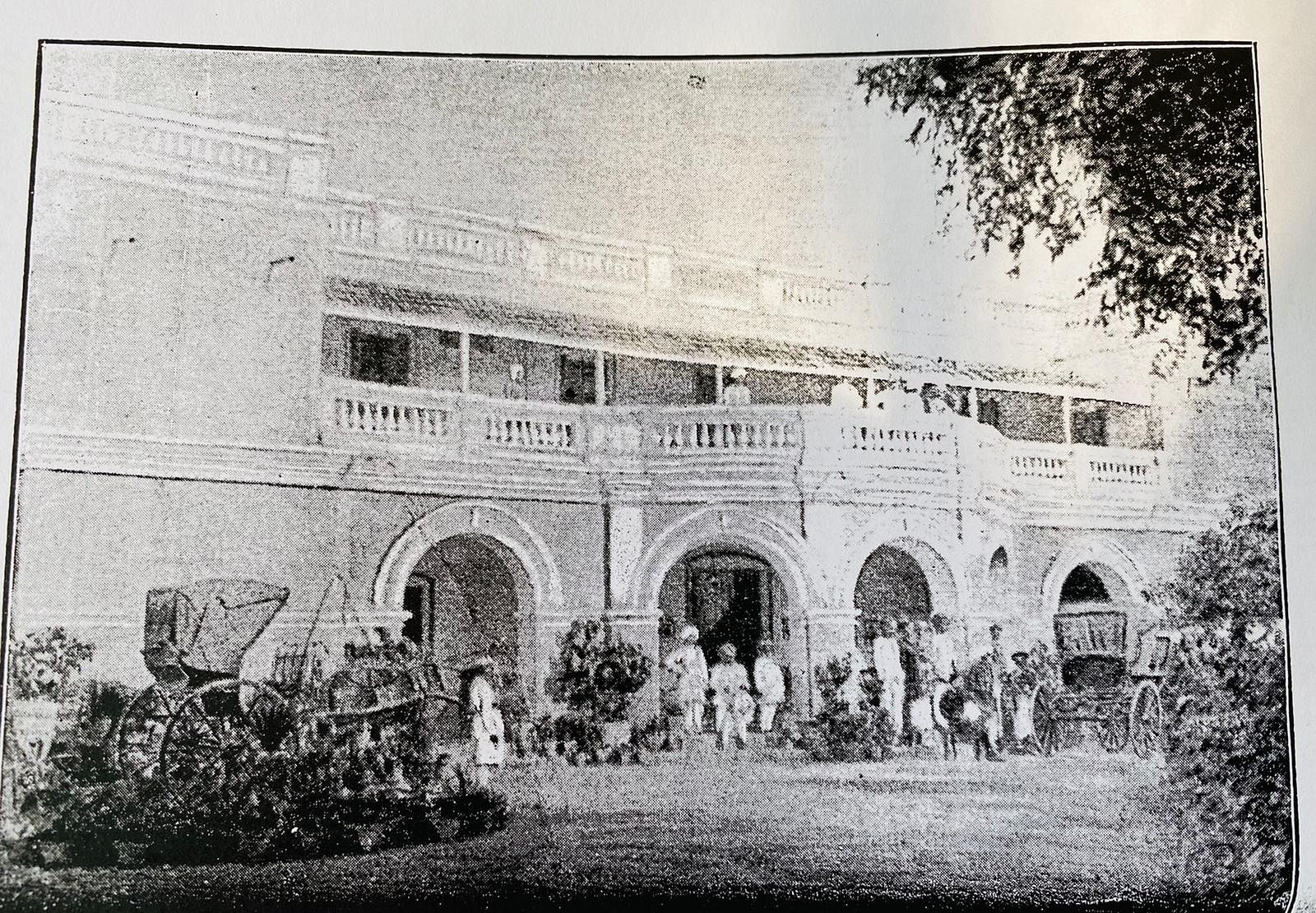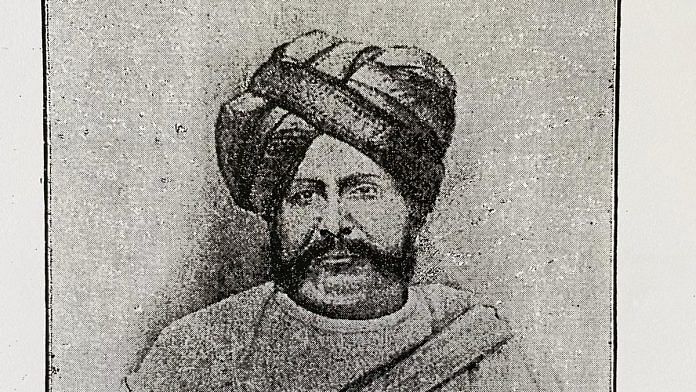During my doctoral research, I was advised by my research supervisor Peter Robb to read catalogues. I used to diligently pick up catalogues in the India Office section of the British Library. Once, I landed on a biography of M. Nagloo, the first written-about Dalit hotelier. I was astonished to see a Dalit biography written as early as 1908 and that too in English. The biography, Maidara Nagayya, written by Nagloo’s son M.N. Venkataswami, opened all-new vistas about the unusual rise of a Dalit and the historical account of the early colonial encounters and British rule’s stabilisation in the Central Provinces.
Another significant aspect of this biography is that it was written twice in two different versions. Venkataswami first wrote and published a hundred copies of the biography in 1908. He had sent 57 copies to his father’s well-wishers and friends in England and the United States. Unfortunately, the remainder of 43 copies were swept away in the floods of 1908 in Hyderabad. Venkataswami rewrote the biography and published it in 1929 with extensive corrections and additions. Interestingly, but not surprisingly, both the versions of the biography ended up in the British Library.
This biography is not only rare, but is perhaps the first Dalit biography written in English. It challenges conventional historical understanding in Dalit studies, which presumes that before Ambedkar, there were no significant scholarly articulations and writings by Dalits. In contrast, the author of this biography, M.N. Venkataswami, was a prolific writer in English. He was a Royal Asiatic Society member and a well-established folklorist of his time. He consistently published in international journals like Folklore and Indian Antiquity. He translated Valmiki’s Ramayana in English with Ralph T.H. Griffith. He wrote The Story of Bobbili: As Handed Down Through Minstrels with Jadhunath Sarkar in 1912, and with Narayan G. Chandavarkar wrote Folk Stories of the Land of Ind in 1927. He worked as a librarian at the State Central Library in Hyderabad.
Most importantly, Venkataswami’s acquaintance with the larger academic world is too impressive and difficult to ignore. In her recent book The Audacious Raconteur (Cornell University Press, 2020), Leela Prasad has a chapter devoted to Venkatswami titled ‘Sovereignty and Storytelling Colonial India’, which describes his folkloric contributions. Meanwhile, I am trying to trace the family both in Nagpur and Hyderabad, and so far have made multiple trips in vain. I will edit and publish the biography soon.
Also read: New Dalit women autobiographies are opening up private, intimate spaces, rewriting history
Nagloo’s royal ancestry
Venkatswami writes that Nagloo’s ancestors were from the Rayalaseema region of Madras presidency. He claims royal lineage to his family and narrates their downfall in the caste ladder because of one forefather’s debasing act. According to him, during the 1783 famine, Nagloo’s grandfather Maidara Govindoo saw a group of Malavandlu (Malas) sitting around and voraciously eating a cow’s much-desecrated flesh. Pinched by hunger, Govindoo took a piece of the flesh, and ate it. The king came to know about it and ostracised him to the status of untouchables.
Govindoo supplied bullock carts to British native infantries during the battle of Seringapatam in 1799 and amassed a lot of wealth. He died when his son Polaya (Nagloo’s father) was still young. Polaya lived on the wealth amassed by his father and became a sorcerer and witchcraft man. Nagloo too lost his father in childhood. After marrying off two of his sisters, Nagloo’s mother brought him to Hyderabad to live with her brother. Within a few months, Nagloo’s mother died.
Nagloo joined country carts carrying goods to Jalna, a British military station. British Army officers picked up low-level servants and assistants in the early days of colonial occupation, predominantly untouchables from Machilipatnam (Bandaroo). It was a trading centre and port city that acted as an entry point for the Europeans in Coromandel Coast. Nagloo was employed as a domestic servant in the house of Lieutenant Colonel of Royal Horse Artillery. From Jalna, he moved to Kamptee near Nagpur and worked for different British army officers as domestic servant-cum-butler till 1857.
Also read: Kanshi Ram’s Bahujan movement was also cultural, not just political
Nagloo’s rise as a hotel entrepreneur
After 1857, Nagloo started a bullock cart carriage business from Nagpur to Bombay and simultaneously worked for Captain R.H. Bolton of Bombay Infantry and Robert Brereton, Chief Engineer, Great Indian Peninsular Railway. Both these officers entrusted Nagloo with the purchase of durable timber logs for the Railway’s sleepers. The profits from rail logs contracts and transport business enabled him to establish a Nagpur hotel on 20 March 1864.

The gradual consolidation of power and constitution of Central Province along the expansion of railway lines increased the volume of trade between different areas. Moreover, it also increased access to interior regions for British officials and traders who used Nagpur as a base. This brought in lots of English clientele to Nagloo’s hotel; sometimes, his former bosses were his clients. However, the first chief commissioner of Central Provinces, Richard Temple, helped Nagloo expand his business by providing free lands, clientele, and the much-needed encouragement.
In 1866, an industrial exhibition was organised in Nagpur by Richard Temple to expose the Central Provinces to business and commercial opportunities. Nagloo was entrusted with transport, food, and accommodation arrangements. This official patronage helped Nagloo increase his business in terms of financial options and his standing in the public eye, especially in the caste-ridden society. The successful arrangements and British officials’ patronage helped Nagloo overcome the caste disadvantage (untouchable status) and got him clients from caste Hindus who were native rulers while Muslim ruling elite was also patronised for special occasions arranging food and wine.
Nagloo’s hotel became globally known with travellers from the UK and the US mentioning him in their travelogues. Punch, a British satirical magazine, published advertisements about the hotel. The Tatas wanted to buy the hotel for Rs 1 lakh at the height of its glory, but Nagloo refused to sell. As his success reached the pinnacle, he also made enemies among caste Hindus who had been facing court cases. He had to surrender his property to the British, who paid him a meagre Rs 10,000 as compensation and converted the hotel into Bengal-Nagpur Railway Headquarters. That downfall led to paralysis and the eventual death of Nagloo. His son Venkatswami was determined to tell his father’s story from obscurity to a prominent figure in early colonial India whose name was known worldwide.
Chinnaiah Jangam, PhD, is an Associate Professor in the Department of History at Carleton University, Canada. He tweets @cjangam. Views are personal.
(Edited by Prashant Dixit)
This article is part of the Dalit History Month 2021 series. Read all the articles here.








Amazing history. The article tells us of the successful collaboration between a dalit and numerous brahmin collaborators. It also shoes how individual dalits could rise and grow. Which leaves me wondering: even Ambedkar’s rise and growth was propelled by brahmins; so from where did all his rancour against brahmins come from? The article also shows that these individual dalit succeses did nothing to help other dalits to grow. That job of helping was still left to brahmins, brahmin politicians, brahmin administrators, brahmin teachers. Even Dr. BRAmbedkar had a brahmin wife who helped him survive long enough to make a mark on India.
Excellent article.
Amazing piece of history! Thank you for writing this.
PLS SUPPLY ME COPY OF ARTICLES OF DALITS HISTORY MONTH 2021 . AND THIS BOOK SUPPLY ME
MY ADRESS
P S MEHRA
HNO952/29 PARK STREET FAUJI GALI KRISHNA COLONY GURGAON HARYANA 122001 BY VPP OR TELL ME THE
NAME OF THIS BOOK AVAILABLE ON AMAZON .